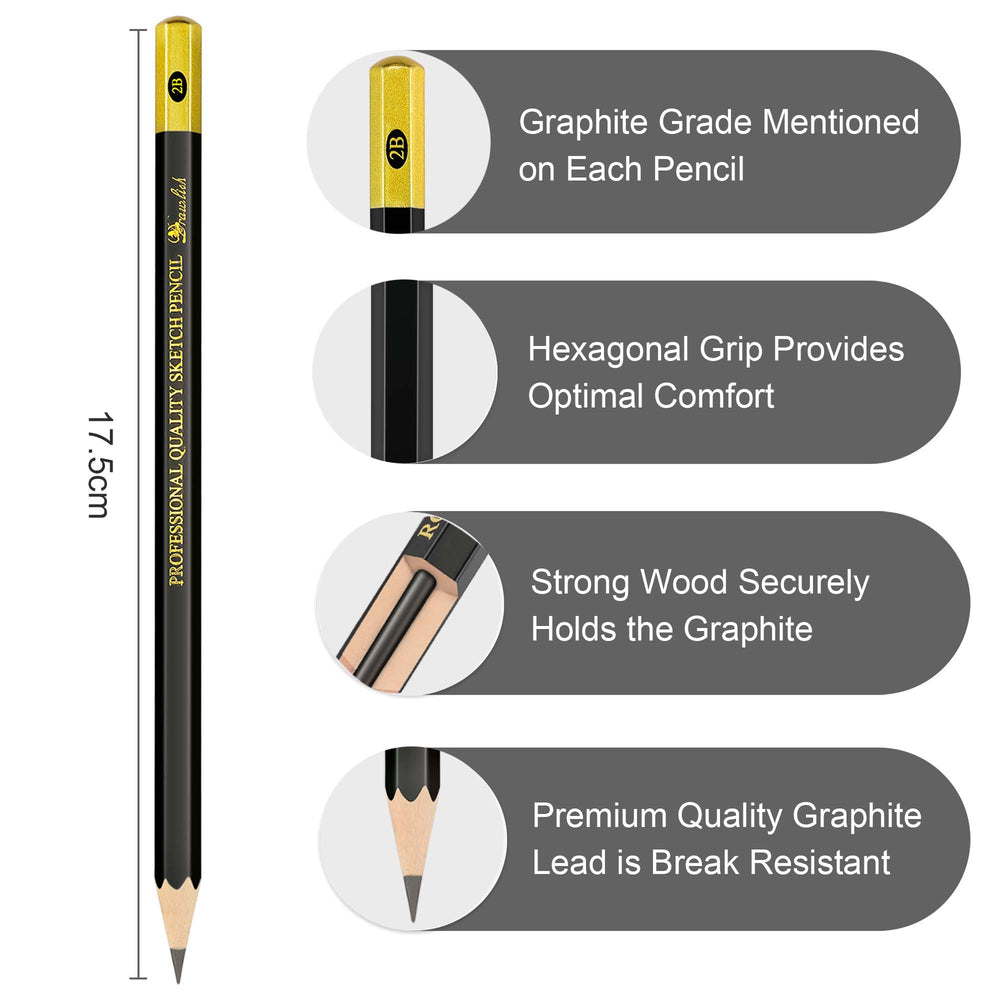Acrylic Paint Secrets: Everything You Need to Know
Acrylic paint, there’s a lot more to it than meets the eye. Whether you're new to painting or have been using acrylics for years, there are always some hidden tricks and tips that can take your art to the next level. You’ve probably heard of Drawlish Acrylic Paint Set, it’s a great option for both beginners and seasoned artists. But there's so much more to acrylic paint than just choosing a brand!
So let’s dive into everything you need to know to master acrylic paint, from deep into the tips, tricks, to little-known secrets of working with acrylic paint. Ready? Let’s go!

What Is Acrylic Paint?
Acrylic paint is a synthetic paint made from pigment mixed into a water-soluble acrylic polymer emulsion. When wet, it can be diluted with water, but as it dries, it becomes water-resistant. This makes acrylics highly versatile for layering, glazing, and creating detailed textures.
A Brief History of Acrylic Paint
Acrylic paints were first developed in the early 1930s, but it wasn’t until the 1950s that they became widely available to artists. Their introduction to the art world offered an alternative to slower-drying oil paints, and artists quickly embraced them for their ease of use and durability.

Acrylic vs. Other Paint Mediums
Each paint medium has its strengths, but acrylic stands out for its versatility. Here's a comparison between acrylics, oils, and watercolors to show you why:
| Feature | Acrylic Paint | Oil Paint | Watercolor Paint |
|---|---|---|---|
| Drying Time | Fast (minutes-hours) | Very Slow (days-weeks) | Very Fast (minutes) |
| Layering | Excellent | Excellent | Limited |
| Blending Time | Moderate | Long (due to drying) | Short |
| Durability | High (once dry) | High | Moderate |
| Cleanup | Easy (water-based) | Requires solvents | Easy (water-based) |
| Surface Flexibility | Versatile (works on canvas, wood, fabric) | Best on canvas | Paper-based only |

Acrylic paint is super versatile, you can even use it like watercolor by thinning it with water for soft washes. But be careful not to over-thin it, you do need a proper guide. Also, did you know you can paint oil over acrylic? It works, but don’t do the reverse or your painting might crack. Curious about the differences between acrylic and gouache? Click here to find out!
Why Choose Acrylic Paint?
Acrylics are beloved by both hobbyists and professionals for several reasons:
- Quick Drying: Waiting days for paint to dry? No thanks! Acrylics dry within minutes to hours, depending on thickness.
- Versatile Application: They work on nearly any surface, from canvas to fabric, paper, wood, and for tips visit here.
- Durability: Once acrylic paint dries, it’s water-resistant and durable, making it ideal for long-lasting works.
- Customizable Consistency: By adjusting with water or medium, you can change acrylics from thick, oil-like textures to thin, watercolor washes.
- Non-Toxic: Unlike oil paints, acrylics are water-based, which means no toxic fumes or solvents.
Types of Acrylic Paints
Choosing the right type of acrylic paint depends on your project. Here's a breakdown of the most common types of acrylics:
| Type of Acrylic Paint | Characteristics | Best For |
|---|---|---|
| Heavy Body | Thick, retains brushstrokes, high pigment load | Textured work, impasto |
| Fluid | Thin, smooth, still highly pigmented | Detailed work, fluid techniques |
| Open Acrylics | Slow-drying, allows for blending over long periods | Fine detail, soft blending |
Essential Tools for Acrylic Painting
Having the right tools can make or break your acrylic painting experience. Let’s talk about what you’ll need.
Best Brushes for Acrylics
Synthetic brushes are your best bet when it comes to acrylic painting. They’re stiff enough to handle thick paints, yet flexible enough for delicate strokes.
|
|

Canvas and Surfaces
While acrylics can work on almost anything, the most common surfaces include:
- Canvas: Versatile, works well with gesso primer for an even surface.
- Wood: Ideal for those looking for a different texture.
- Paper: Use heavyweight, non-absorbent paper to prevent warping.
- Glass: Thoroughly clean and use a glass-specific primer for the paint to adhere, here's how it works!
- Fabric: Mix acrylic paint with a fabric medium for flexibility. If you want to remove it, act fast while the paint is still wet by using soap and water.
Acrylic Paint Mediums and Additives
Want to control the texture, drying time, or finish of your acrylic paint? You’ll need to get familiar with some key mediums and additives:
| Medium/Additive | Purpose | How It’s Used |
|---|---|---|
| Gel Mediums | Thickens paint, adds texture | Mix directly with acrylic paint |
| Retarders | Slows drying time | Add a small amount to paint |
| Gesso | Prepares and primes surfaces | Apply to canvas or wood before painting |
| Acrylic Glazing Liquid | Increases transparency for layering and glazing | Use to create transparent layers |
Want to keep your art safe from the elements? Don’t miss our blog Is Acrylic Paint Waterproof? Act Now to Save Your Art for tips on protecting your masterpieces.

Popular Acrylic Painting Techniques
Learning different techniques will help you get the most out of your acrylics:
Wet-on-Wet Technique
This involves applying fresh paint onto a wet surface. It allows for smooth blending and gradients. For best results, use open acrylics or add a retarder to extend the drying time.
Dry Brush Technique
Using a dry brush and minimal paint, this technique creates rough, textured strokes, ideal for adding highlights or gritty textures.
Glazing
By using a glazing medium or thinning paint, you can apply thin, transparent layers that allow previous layers to show through, adding depth and complexity to your painting.
Layering
Acrylics allow you to build layers quickly. Apply a base coat, let it dry, and then add more layers for a rich, textured finish.

How to Control Drying Times
Acrylic paint is notorious for drying fast, which can be both a blessing and a curse. If you want more working time, consider using a retarder or switching to slow-drying acrylics like Open Acrylics.
- Quick-drying acrylics: Perfect for rapid layering and working in stages.
- Slow-drying acrylics: Ideal if you want to blend, smooth, or adjust your paint, to learn more open this guide.
Common Acrylic Painting Mistakes and How to Avoid Them
Acrylics may seem straightforward, but there are a few common pitfalls:
- Over-thinning with water: This can break down the paint binder, leading to a weak finish.
- Not priming the surface: Always use gesso to prep your surface.
Acrylic Paints and Water: The Right Balance
Water is your best friend and worst enemy when it comes to acrylics.
Thinning Paint with Water
Use water sparingly. Too much can cause the paint to lose its vibrancy.
Using Acrylic Mediums Instead of Water
Instead of diluting with water, use mediums. They maintain the richness of the color while altering the paint’s consistency.
Check out if you can mix acrylic paint with water? do's and don'ts

Acrylic Paint Finishes: Matte, Glossy, and Satin
Choosing the right finish can make or break your painting.
- Matte: No shine, ideal for a muted look.
- Glossy: Adds vibrancy and pop to colors.
- Satin: A balance between matte and glossy.
Acrylic Pouring: The Trend Everyone Loves
Acrylic pouring is all the rage for a reason! This technique involves pouring fluid acrylics to create mesmerizing, abstract designs.
Tip: Use a pouring medium to get that smooth, flowing effect without compromising color.
Sealing and Varnishing Your Acrylic Paintings
Sealing your work with a varnish ensures it lasts. Plus, it adds a protective layer and enhances the color.
- Varnish Types: Gloss, matte, satin, your choice depends on the final look you want.
To protect acrylic on ceramics, use a proper sealer. Mod Podge can work, but a ceramic-specific varnish is better. For ceramic plates, choose a dishwasher-safe varnish. You can also bake acrylic paint on ceramic to make it more durable.

How to Store Acrylic Paint Properly
You don’t want to open your paint only to find it’s dried up, right? Store your tubes or jars in a cool, dry place, and always make sure the lids are tightly sealed.
Cleaning and Caring for Your Brushes and Tools
Don’t let acrylic build up on your brushes. Wash them right after use with soap and water, and never leave them soaking in water for too long, it ruins the bristles.
Tip: For in-depth guide on cleaning and caring for your brushes, click here.
And there you have it, everything you need to know about acrylic paint! From the different types of acrylic paints to the right tools and techniques, you're now equipped with all the acrylic paint secrets to level up your art. Whether you're diving into acrylic pouring or perfecting your glazing techniques, these tips will help you create your next masterpiece. Just remember, it’s all about practice, patience, and a bit of experimentation!







Leave a comment